Abstract
The derivative toxins purified from cultures of proteolytic strains of Clostridium botulinum types A and F were found to have been only partially nicked but were fully activated. Trypsinization of C. botulinum type B derivative toxin at pH 6.0 resulted in simultaneous activation and nicking, whereas at pH 4.5, activation preceded nicking. The toxin was split by trypsin at pH 6.0 into two fragments with molecular weights of 112, ooo and 57,000. The toxin contained at least three trypsin-sensitive peptide bonds, one of which was more sensitive than the others at pH 6.0. These results indicate that activation of botulinum toxins by trypsin or endogenous protease (s) is not a direct result of nicking.
Full text
PDF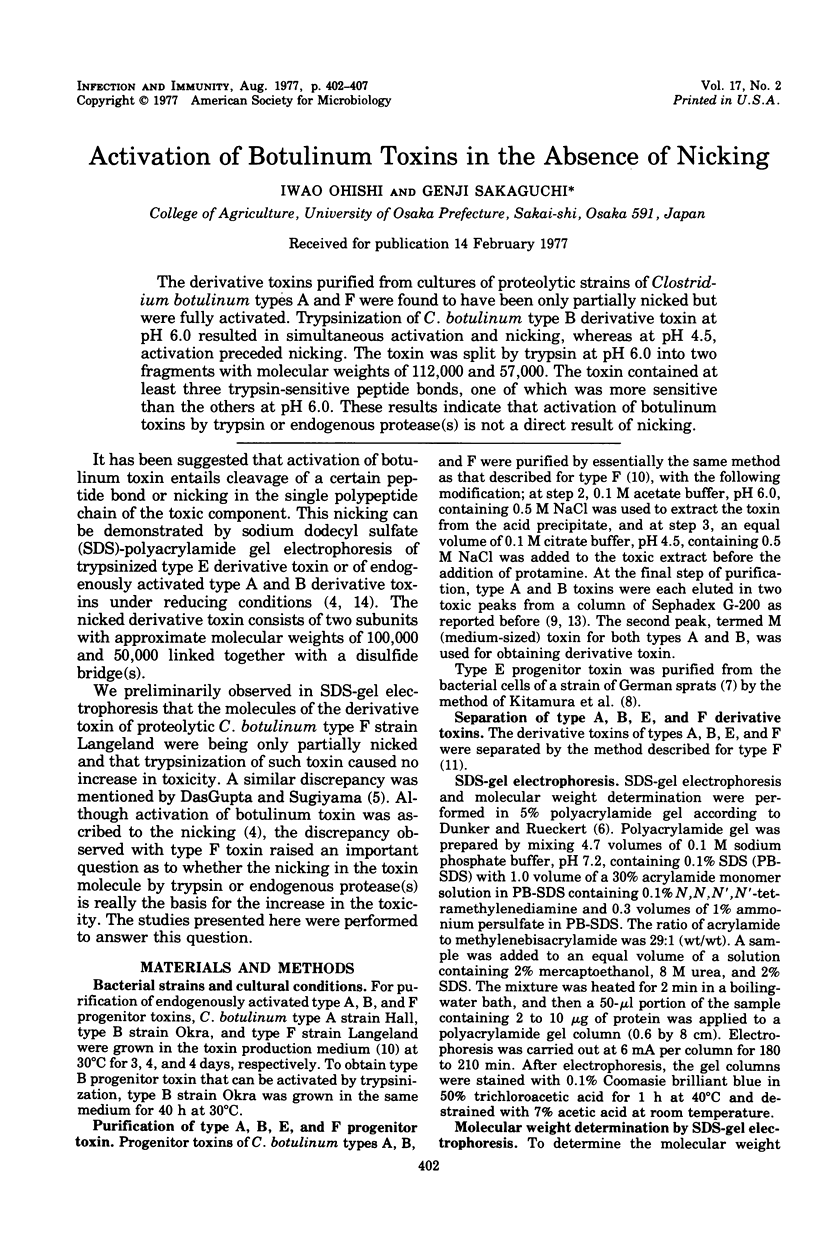
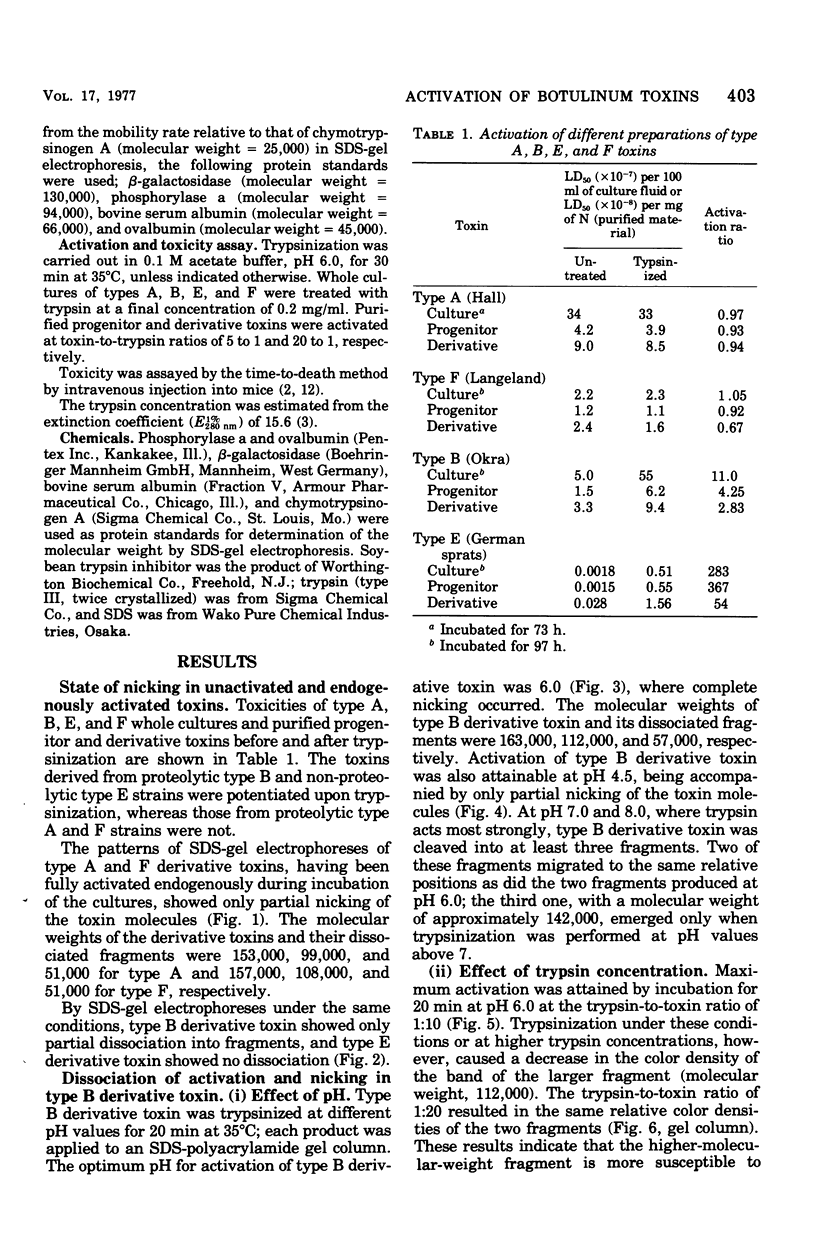
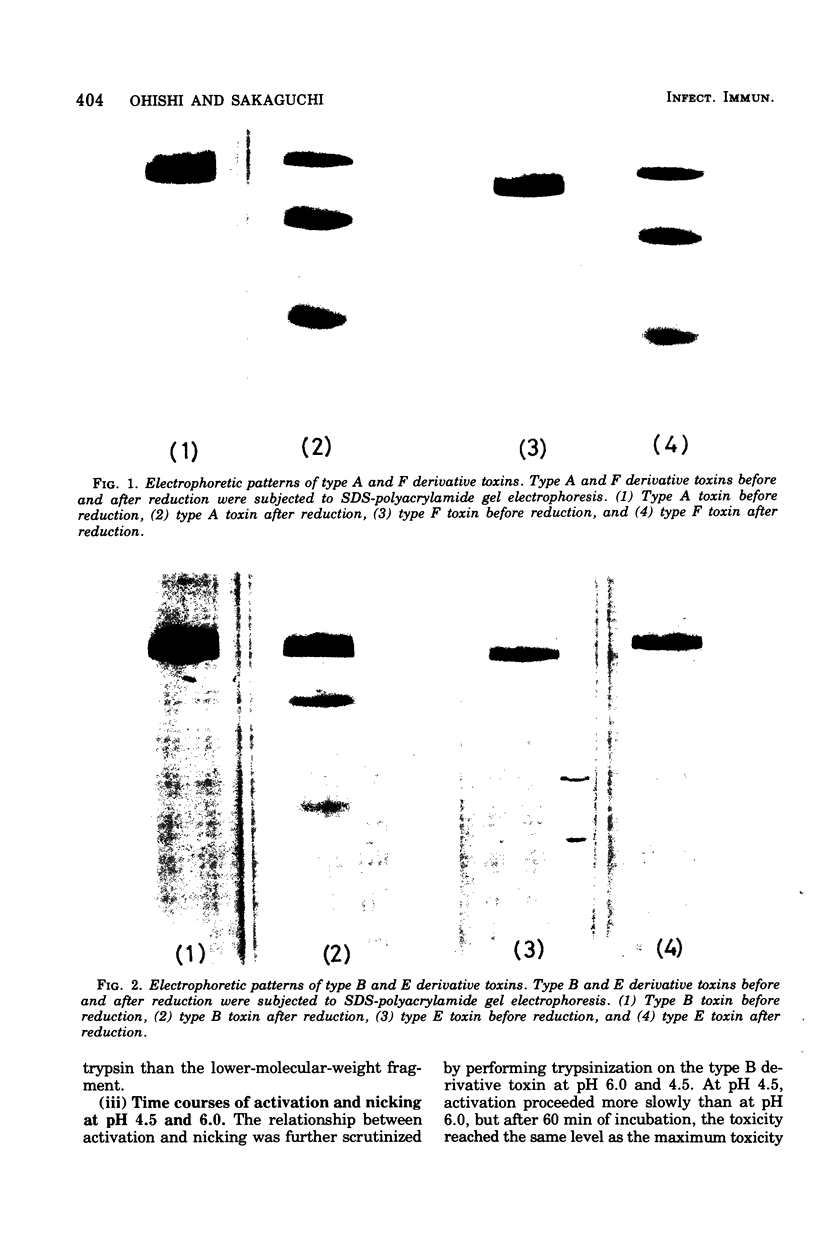
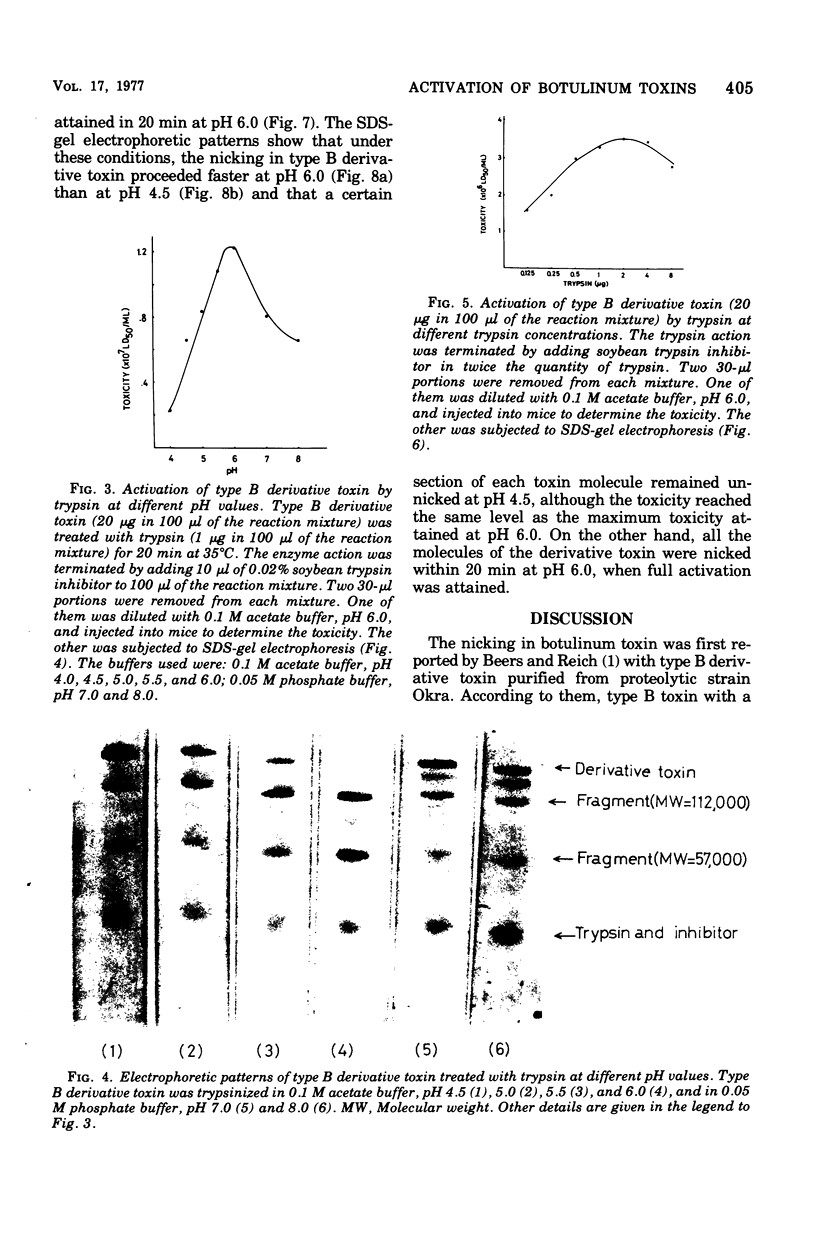
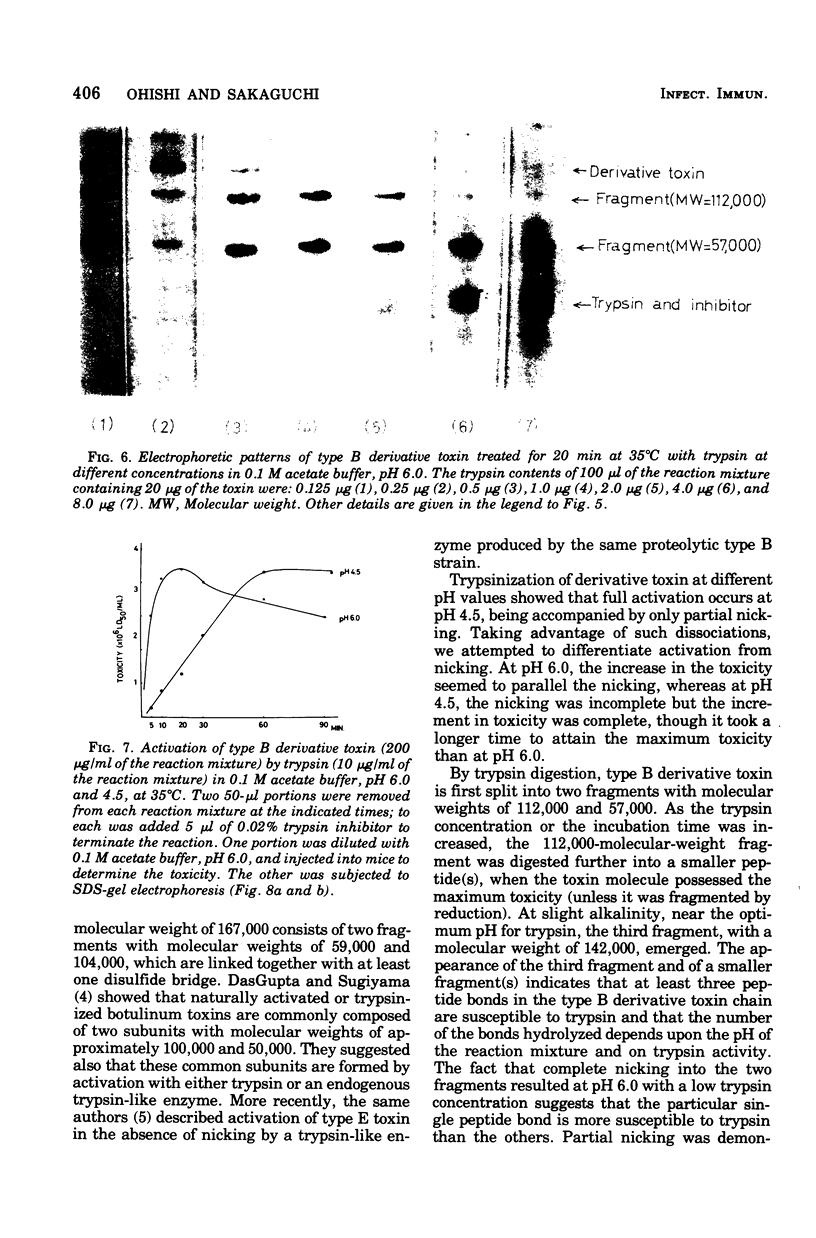
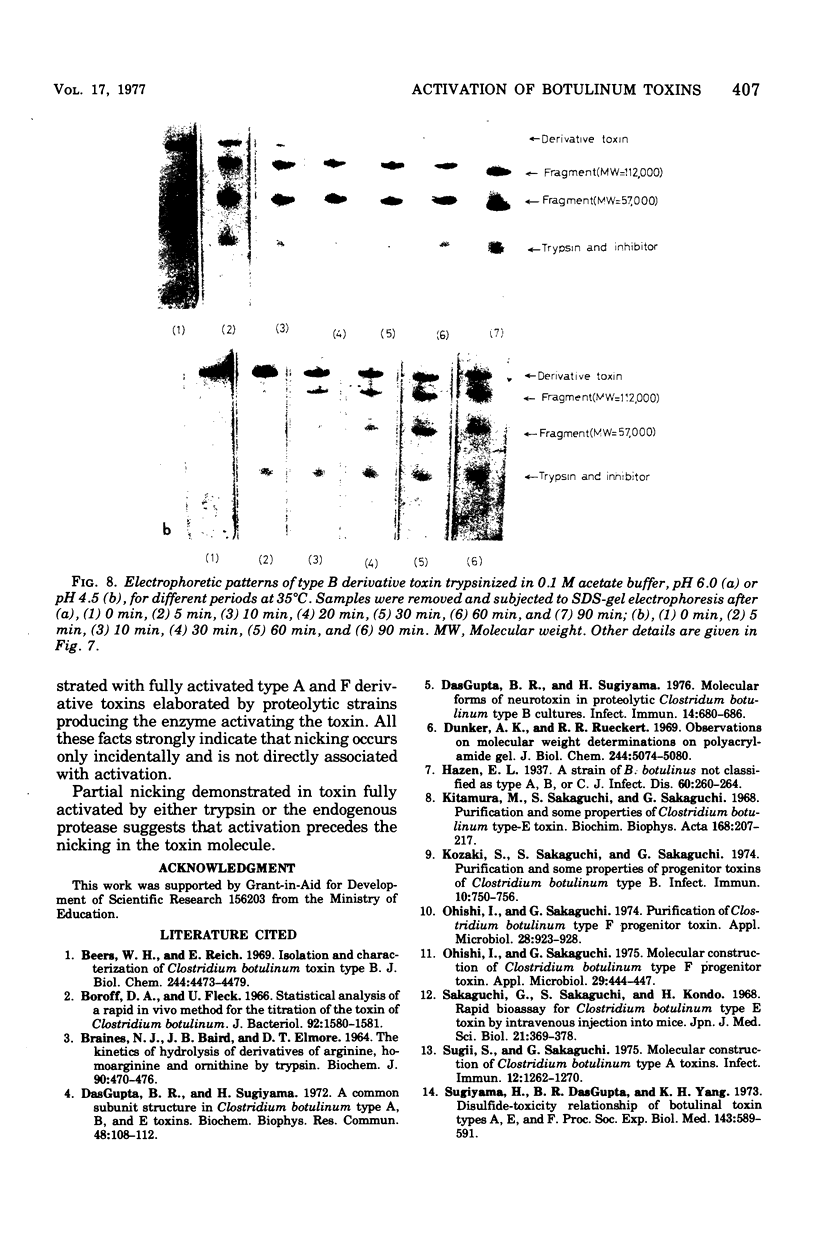
Images in this article
Selected References
These references are in PubMed. This may not be the complete list of references from this article.
- Baines N. J., Baird J. B., Elmore D. T. The kinetics of hydrolysis of derivatives of arginine, homoarginine and ornithine by trypsin. Biochem J. 1964 Mar;90(3):470–476. doi: 10.1042/bj0900470. [DOI] [PMC free article] [PubMed] [Google Scholar]
- Beers W. H., Reich E. Isolation and characterization of Clostridium botulinum type B toxin. J Biol Chem. 1969 Aug 25;244(16):4473–4479. [PubMed] [Google Scholar]
- Boroff D. A., Fleck U. Statistical analysis of a rapid in vivo method for the titration of the toxin of Clostridium botulinum. J Bacteriol. 1966 Nov;92(5):1580–1581. doi: 10.1128/jb.92.5.1580-1581.1966. [DOI] [PMC free article] [PubMed] [Google Scholar]
- DasGupta B. R., Sugiyama H. A common subunit structure in Clostridium botulinum type A, B and E toxins. Biochem Biophys Res Commun. 1972 Jul 11;48(1):108–112. doi: 10.1016/0006-291x(72)90350-6. [DOI] [PubMed] [Google Scholar]
- Dasgupta B. R., Sugiyama H. Molecular forms of neurotoxins in proteolytic Clostridium botulinum type B cultures. Infect Immun. 1976 Sep;14(3):680–686. doi: 10.1128/iai.14.3.680-686.1976. [DOI] [PMC free article] [PubMed] [Google Scholar]
- Dunker A. K., Rueckert R. R. Observations on molecular weight determinations on polyacrylamide gel. J Biol Chem. 1969 Sep 25;244(18):5074–5080. [PubMed] [Google Scholar]
- Kitamura M., Sakaguchi S., Sakaguchi G. Purification and some properties of Clostridium botulinum type-E toxin. Biochim Biophys Acta. 1968 Oct 21;168(2):207–217. doi: 10.1016/0005-2795(68)90144-x. [DOI] [PubMed] [Google Scholar]
- Kozaki S., Sakaguchi S., Sakaguchi G. Purification and some properties of progenitor toxins of Clostridium botulinum type B. Infect Immun. 1974 Oct;10(4):750–756. doi: 10.1128/iai.10.4.750-756.1974. [DOI] [PMC free article] [PubMed] [Google Scholar]
- Ohishi I., Sakaguchi G. Molecular construction of Clostridium botulinum type F progenitor toxin. Appl Microbiol. 1975 Apr;29(4):444–447. doi: 10.1128/am.29.4.444-447.1975. [DOI] [PMC free article] [PubMed] [Google Scholar]
- Oishi I., Sakaguchi G. Purification of Clostridium botuliunum type F progenitor toxin. Appl Microbiol. 1974 Dec;28(6):923–928. doi: 10.1128/am.28.6.923-928.1974. [DOI] [PMC free article] [PubMed] [Google Scholar]
- Sakaguchi G., Sakaguchi S., Kondo H. Rapid bioassay for Clostridium botulinum type-E toxins by intravenous injection into mice. Jpn J Med Sci Biol. 1968 Dec;21(6):369–378. doi: 10.7883/yoken1952.21.369. [DOI] [PubMed] [Google Scholar]
- Sugii S., Sakaguchi G. Molecular construction of Clostridium botulinum type A toxins. Infect Immun. 1975 Dec;12(6):1262–1270. doi: 10.1128/iai.12.6.1262-1270.1975. [DOI] [PMC free article] [PubMed] [Google Scholar]
- Sugiyama H., Das Gupta R., Yang K. H. Disulfide-toxicity relationship of botulinal toxin types A, E, and F. Proc Soc Exp Biol Med. 1973 Jul;143(3):589–591. doi: 10.3181/00379727-143-37372. [DOI] [PubMed] [Google Scholar]







